 © Marjolein den Hartog
© Marjolein den Hartog
The wienerberger Sustainability Program 2023
Decarbonization, the circular economy, and biodiversity: These are the environmental pillars of wienerberger’s Sustainability Program 2023.
 © Marjolein den Hartog
© Marjolein den Hartog
Our sustainability strategy is part of wienerberger’s corporate strategy. The wienerberger Sustainability Program 2023 comprises measurable ESG (environmental, social, governance) targets and measures. It takes current ecological, social, and societal requirements into account.
Decarbonization, circular economy, and biodiversity
Based on three environmental pillars, the wienerberger Sustainability Program 2023 translates the European Green Deal into reality. In this program, we have set ourselves ambitious targets for decarbonization, the circular economy, and biodiversity. For years, we have been consistently pursuing the goal of improving people’s quality of life and promoting environmental protection. We are convinced that with additional efforts, enhanced know-how, and further investments we can do even more.
The road to the future: five core topics
The wienerberger Sustainability Program 2023 replaces our Sustainability Roadmap 2020. We have therefore analyzed our value chains and identified five core topics: climate & energy, the circular economy, biodiversity & environment, employees, and business ethics & social impacts. In the course of our subsequent materiality analysis, we also involved our stakeholders.
Climate change is threatening our survival on this planet. The building sector alone accounts for more than one third of worldwide energy consumption and almost 40% of CO2 emissions. With our innovative products and systems we are providing solutions for decarbonization. In doing so, we are supporting the European Green Deal and preparing the ground for the future.
Our Commitment
Holistic and Smart Solutions
Decarbonization and adaptation to climate change are important topics for wienerberger. We address these challenges by providing solutions that are fit for the future.
Group-wide commitment: Within wienerberger, we are committed to decarbonization along the entire value chain – from product design to sourcing to production and the end use of our products.
Positive climate balance of buildings: In the future, buildings ought to store more CO2 than they emit over their entire life cycle. With our products and building material solutions, we are actively contributing to the achievement of this target.
Plastic pipe systems that meet the future demands of energy supply: We are working on the development and supply of plastic-based pipeline systems for hydrogen and biogas. Such high-pressure systems are used in transport and industry.
Climate-resilient habitats, energy-efficient products: Global trends, such as climate change, are creating new requirements, for instance in water management. They are acting as drivers in the development of holistic and smart products and solutions.
Our Goal
What we Want to Achieve
15 %
less CO2 emissions (scope 1 and 2) by 2023 as compared to 2020
This target includes reductions of our:
- Scope 1 emissions: direct CO2 emissions from primary energy sources and from raw materials (of special relevance in ceramic production).
- Scope 2 emission: indirect CO2 emissions from wienerberger's electricity consumption; emissions from electricity generation. For further information and the definitions of Scope 1 and 2, please refer to the following chapter “Climate Change & Decarbonization”.
Our Measures
What We Are Doing
- In our sourcing, we promote circularity by increasing the amount of secondary raw materials used. Group-wide supply management facilitates the optimization of transport. Moreover, we have decided to convert fully to green electricity.
- In production and product design, we are minimizing CO2 emissions through technological innovations. The remaining greenhouse gas emissions are offset by climate protection programs.
- Through ongoing optimization programs, such as the Plant Improvement Program (PIP) and the Production Excellence Program (PEP), as well as the Lean Six Sigma management approach, we are improving our production procedures and optimizing our processes.
- We are advancing the decarbonization of our product portfolio through innovations and novel product designs. Examples include climate-neutral bricks and solar panels integrated into roof surfaces.
- Our products and solutions represent our response to climate change. Examples include our smart pumping stations, rainwater management systems, and the greening of roofs and facades to improve the micro-climate.
 © KME Studios
© KME Studios
Our Success and our Challenges
Optimizing Processes and Breaking New Ground
- Our decarbonization effort has been particularly successful in the clay block and roof tile segments. In recent years, we outperformed our targets in terms of efficiency enhancement.
- However, genuine decarbonization will take more than mere process optimization. New ways will have to be found and new processes developed.
- wienerberger will spend EUR 60 million per year on decarbonization. These investments comprise research and development, innovative processes and novel products.
Our long-term target is to implement the European Green Deal: wienerberger wants to be climate-neutral by 2050 at the latest. The decarbonization of production processes, an innovative product portfolio, and new technologies will take us there.
Useful Information
Decarbonization in Figures
|
Unit |
2020 |
2021 |
Chg. in % |
|---|---|---|---|---|
| Total energy consumption | in gigawatt-hours |
7,431 |
7,993 |
+7.6 |
| Index of specific energy consumption | in % based on kWh/quantity of products ready for sale (2020 = 100%) |
100.0 |
99.1 |
-0.9 |
| Absolute direct (Scope 1) and indirect (Scope 2) CO₂ emissions | in kilotons |
2,649 |
2,659 |
+0.4 |
| Absolute direct CO₂ emissions from primary energy sources and raw materials (Scope 1) | in kilotons |
2,353 |
2,484 |
+5.5
|
Absolute indirect CO₂ emissions from electricity (Scope 2) |
in kilotons |
296 |
176 |
-40.7 |
Index of specific direct (Scope 1) and indirect (Scope 2) CO₂ emissions |
in %, based on kg CO₂/quantity of products ready for sale (2020 = 100%) |
100.0 |
91.9 |
-8.1 |
Index of specific direct CO₂ emissions (Scope 1)
|
in %, based on kg CO₂/quantity of products ready for sale (2020 = 100%) | 100.0 | 97.3 | -2.7 |
| Index of specific indirect CO₂ emissions (Scope 2) | in %, based on kg CO₂/quantity of products ready for sale (2020 = 100%) | 100.0 | 94.6 | -5.4 |
The circular economy is a central pillar of wienerberger’s Sustainability Program 2023: It enables us to ensure the long-term availability of raw materials. In the future, all new wienerberger products will be 100% recyclable or re-usable. At the same time, we are continuously increasing the amount of secondary or recycled raw materials used in production.
Our Commitment
Longer Life Cycles, Lower Material Consumption, Circular Product Design
The circular economy is the only meaningful alternative to the linear economic model. It has the potential to reduce the burden on the environment, ensure a secure supply of raw materials, trigger intensified competition, and promote innovation. If resources are reused or recycled, raw materials are saved and emissions reduced.
Secure raw material supply: For wienerberger, as an industrial company, the secure, long-term supply of raw materials is essential. We aim at securing our raw material reserves for a period of at least 20 years through targeted raw materials management.
Reduced consumption of resources: We save resources by reducing the consumption of raw materials. At the same time, we are continuously increasing the amount of secondary and recycled materials used in our production.
Design for a second life: In product design, attention is focused on reusability and recyclability. The possibility of sorting and separating the materials used is taken into account in the design process.
Our Goal
What We Want to Achieve
100 % of our new products are designed so as to be re-usable or recyclable.
Our Measures
What We Are Doing
- We are focusing on innovation, research, and development. Through R&D projects, we are improving the reusability and recyclability of our products.
- We are continuously optimizing our processes and facilities, which results in sustainable savings of resources and costs.
- Wherever possible, we use secondary raw materials in production. We also use production waste (scrap) from our own production processes.
- We are involved in organizations and working groups promoting a circular economy. For example, our subsidiary Pipelife, a member of TEPPFA (The European Plastic Pipes and Fittings Association), signed the Circular Plastics Alliance.
- When designing new products, we take the properties essential for their reusability and recyclability into account, including post-use separability of the materials used for our products and solutions.
 © Elke Mayr
© Elke Mayr
Our Success and our Challenges
Creating Products for the Circular Economy
- In the plastic pipe segment, we outperformed our targets, having achieved them two years earlier than planned: Between 2014 and 2020, the amount of internal and external secondary raw materials used was increased from 59 kg to 83 kg per ton of products.
- The use of secondary raw materials as a substitute for primary raw materials, for instance in ceramic production, is not always economically viable. To obtain material of the required quality, construction debris must be sorted and processed.
- The key to products for the circular economy lies in product design. We are therefore stepping up our efforts to develop reusable and recyclable products and solutions.
We won’t get a second chance to save our environment. We therefore are promoting the principle of circularity and continuously increasing the useful life of our pipe solutions. This enables us to save valuable raw materials and diminish the volume of plastic waste.
Useful Information
Circularity in Figures
|
Segment |
Facts and figures |
|---|---|---|
Secondary raw materials |
Wienerberger Piping Solutions |
In its entire plastic pipe production in 2021, the Wienerberger Piping Solutions Business Unit increased the amount of internal and external secondary raw materials used from 83 to 90 kg per ton produced, which corresponds to an 8.4% increase. Of the total, 48 kg, i.e. a good 53%, were external secondary raw materials. |
Scrap rate |
Wienerberger Building Solutions |
In 2021, the scrap rate in concrete paver production was reduced to 2%. |
Waste volume |
wienerberger |
In 2021, the total volume of waste generated by wienerberger amounted to 126,666 tons, 79% of which was non-hazardous and recyclable (2020: 78%). |
The protection and preservation of our environment is firmly embedded in wienerberger’s perception of its corporate mission: We respect nature reserves, use resources sparingly, and foster biodiversity at our production sites. Over the past 40 years, the world has seen an unprecedented loss of biodiversity – a development we must counteract.
Our Commitment
Environmental Protection as Part of our Business Model
For wienerberger as a producing company, natural resources are indispensable. Our commitment is to supply top-quality products and, at the same time, protect the environment to the best of our abilities.
Value creation: Half of the global gross domestic product (GDP), i.e. EUR 40 trillion, is dependent on nature. For wienerberger, the preservation of the environment is an essential factor of sustainable business management. Environmental protection plays a crucial role along our entire value chain.
Biodiversity: All over the world, the natural balance has been profoundly upset. The main causes relate to the classic environmental problems, including climate change due to the emission of greenhouse gases, the sealing of surfaces, and nutrient and pollutant input in ecosystems. Over the past 40 years, 60% of the global wildlife population has been lost. A million species are at risk of extinction. By fostering biodiversity at all our sites, we improve land use and provide valuable habitat for flora and fauna in terms of quality and quantity.
Climate change: Biodiversity loss and the climate crisis are two phenomena that are closely connected and reinforce one another. The efforts necessary to contain climate change by 2030 therefore also involve measures such as soil rehabilitation, the restoration of wetlands, or the creation of green oases in cities.
Our Goal
What We Want to Achieve
100 %
Biodiversity program for all our sites until 2023
We have set ourselves a clear goal: By 2023, we will implement a biodiversity action plan based on the wienerberger Biodiversity Program at all wienerberger production and office sites.
Our Measures
What We Are Doing
- We are doing our utmost to minimize the impacts of raw material extraction and production on the environment. We are committed to nature conservation and the improvement of biodiversity.
- We are recultivating and renaturing depleted clay extraction sites or making them available for subsequent use. Depleted clay pits provide ideal conditions to attract rare plants and animals. We are implementing appropriate measures in cooperation with local partners from agriculture or with local residents.
- We avoid and substitute hazardous waste, especially in raw materials.
- Climate action and biodiversity are taken into account in the design of products and system solutions.
Our Initiatives
Collaborative Work
We are convinced that businesses create a stronger impact by joining their forces together for positive change. In addition to our own commitments, we take part in unified initiatives working for the preservation of nature and have signed Business for Nature’s Call to Action. This initiative calls on governments to adopt ambitious policies to reverse biodiversity loss in this decade and engage to positively influence them on international agreements for nature and climate change. Meetings of the UN Convention on Biodiversity and UNFCCC (United Nations Framework Convention on Climate Change) will be particularly targeted. wienerberger strongly supports this opportunity to become more resilient and thrive within, not beyond nature’s limits. Building collective movements are key for evolving towards a world where nature is preserved.
The climate crisis is a fact, and only with determined sustainability goals and decisive action can we shape a future worth living. We can’t go on without nature as our ally. Forward-thinking companies already understand why building an equitable and net-zero future also benefits business. That’s why we have signed up to Business for Nature Coalition's call on governments to adopt ambitious policies to protect nature. Together we can transform our impact:
“By providing a unified business voice, we can help influence policies that promote sustainable growth, halt the decline of biodiversity and stop climate change.” Business for Nature
What is Business for Nature
Business for Nature is a global coalition bringing together influential organizations and forward-thinking businesses. Together, we demonstrate business action and amplify a powerful business voice calling for collective action including for governments to reverse nature loss in this decade.
Our Success and our Challenges
Habitats for Animals and Plants
- Our clay pits provide an environment conducive to biodiversity. The Biodiversity Action Plan is being adapted to the local conditions at our sites. Take the example of Orchard Farm in Kent, in the southeast of England, where wienerberger is converting clay extraction sites step by step into habitat for animals and plants that are at risk of extinction.
- Our product range for roofs and facades includes nesting boxes for birds and bats. Ceramic products can be fitted with insect hotels and nesting options for small mammals.
- In our efforts to promote biodiversity, we are drawing on best-practice examples. These include renaturing projects at depleted clay pits and beehives on the roof of the wienerberger headquarters in Vienna.
- Our objective is to ensure that land use by wienerberger has a positive long-term impact on biodiversity. To this end, we will upgrade existing surfaces and enter into new partnerships for compensatory measures.

As a manufacturing company, wienerberger cares about environmental responsibility. The Biodiversity Program is an important part of our Sustainability Program 2023. We are looking forward to having a biodiversity action plan implemented at all our production sites within the framework of this program.,
wienerberger’s employees are the company’s most important success factor. Thanks to their know-how and their dedication, we are able to improve people’s quality of life. We promote the development of the full potential of our employees and offer them a safe and motivating work environment.
Our Human Resources Management
Developing Talents, Increasing Diversity, and Ensuring Safety
Strategic human resources management is a central lever of our corporate success. The shortage of skilled labor, demographic change, and our demanding safety requirements are essential aspects to be addressed, alongside many other important topics.
Managing our demand for skilled labor: The identification, development and retention of high-potential employees is a central topic for wienerberger. The shortage of skilled labor, a problem faced by many companies, calls for a new approach to talent management.
Human resources development: We support the development of our employees. To this end, we are increasing the amount of training provided for internal career planning. We also care about the satisfaction of our employees.
Safety and health: Health and safety at the workplace is a matter of particular importance to us. The group-wide Safety Initiative and the new Health & Safety Policy underline our commitment.
Diversity: At wienerberger, we want to achieve a high level of diversity. Our recruiting strategy, our human resources development, and our succession planning, as well as our talent management, have been adjusted to our ambitious targets.
Our goals
What We Want to Achieve
≥ 15 %
women in senior management until 2023
≥ 30 %
women in staff positions until 2023
10 %
more training hours per employee until 2023
Our Measures
What We Are Doing
- In new appointments, especially to senior management and executive positions, we give preference to women when male and female candidates are equally qualified. Indicators (such as gender KPIs) are measured by way of internal reporting and summarized in an HR report.
- We are fostering internal talents through competence development and further training programs, such as Ready4Expertise and Ready4Excellence. We will further extend our internal reporting on training.
- Employee surveys and measures taken on the basis of the results obtained ensure the satisfaction of our employees.
- Safety experts and safety officers in all country organizations and plants ensure that all health & safety rules are observed. We have safety systems in place at our production sites and continuously invest in occupational safety. Examples include our Health & Safety Policy, the safety app, safety training programs, awareness-building campaigns, and safety portals.
 © Heikki Avent / Wienerberger AS
© Heikki Avent / Wienerberger AS
Our Success and our Challenges
More Women in Executive Positions, Fewer Accidents
- The percentage of women in executive positions, especially in top management, has increased significantly. Recruiting women for engineering positions remains our greatest challenge.
- In 2020, despite the COVID-19 pandemic, we met our target of providing an average of 16 training hours per employee. All safety and health rules were complied with.
- The frequency of accidents declined by 3% in 2020 compared to the previous year. However, we regret to report an increase in accident severity and one fatal accident. We always thoroughly examine the circumstances of any accident and are stepping up our health & safety measures.
The health and safety of our employees is a matter of fundamental importance, especially in the producing industry. As an employer, wienerberger takes this heavy responsibility very seriously. In accordance with the “safety first” principle, every top management meeting starts with safety at work as its first agenda item.
Employee Orientation
wienerberger’s employees are an important factor of success for the company. And more than ever it is crucial that our people have the possibility to be heard and to voice their opinions. This is our corporate responsibility – to make sure that there’s room for everyone’s view. The opinions thus gathered create our basis for discussing business improvements and increasing employee satisfaction. For this reason, an employee survey is carried out every other year at wienerberger, where we ask all to tell it like it is!
Nearly 12,000 team members from 29 countries of wienerberger participated in the employee survey of spring 2021, which resulted in a participation rate of 80%. This high participation strengthens the significance and importance of the feedback received, which is essential for the analysis of the status quo and the definition of improvement measures. Because finally, this feedback is positively impacting the working environment of all our colleagues and our common success of our organization of tomorrow.
Areas of strength within wienerberger are, for example, employee engagement and enablement, our quality and customer focus, colleagues who feel empowered and respected in the job and value the collaboration within their teams, as well as the very clear and promising direction wienerberger is aiming at.
And as a company, we are glad we got valuable feedback that also gives us the opportunity for improvement in some areas. With an action plan and focus groups we are working on topics like better communication with our blue collar-colleagues in the plants, various internship programs and trainings or the establishment of a winning culture to increase commitment, as well as a learning and development focus for mental health. All to be even better in the coming employee survey, which we will run in 2023.
Useful Information
Human Resources Indicators
|
Unit |
2020 |
2021 |
Change (in %) |
|---|---|---|---|---|
Women in senior management |
in %, relative to headcount |
13 |
15
|
- |
Women in white-collar positions |
in %, relative to headcount |
32 |
33 |
- |
Average training hours per employee |
in hours
|
10.6 |
13.1 |
+23.2 |
Accident frequency |
Number of occupational accidents / |
5.4 |
4.4 |
-18.7 |
Accident severity |
Accident-related sick-leave days / |
178 |
180 |
+1.3 |
Number of fatal occupational accidents |
Number within wienerberger |
1 |
1 |
- |
Average sick-leave days per employee |
Number of sick-leave in days |
10.8 |
11.5 |
+6.7 |
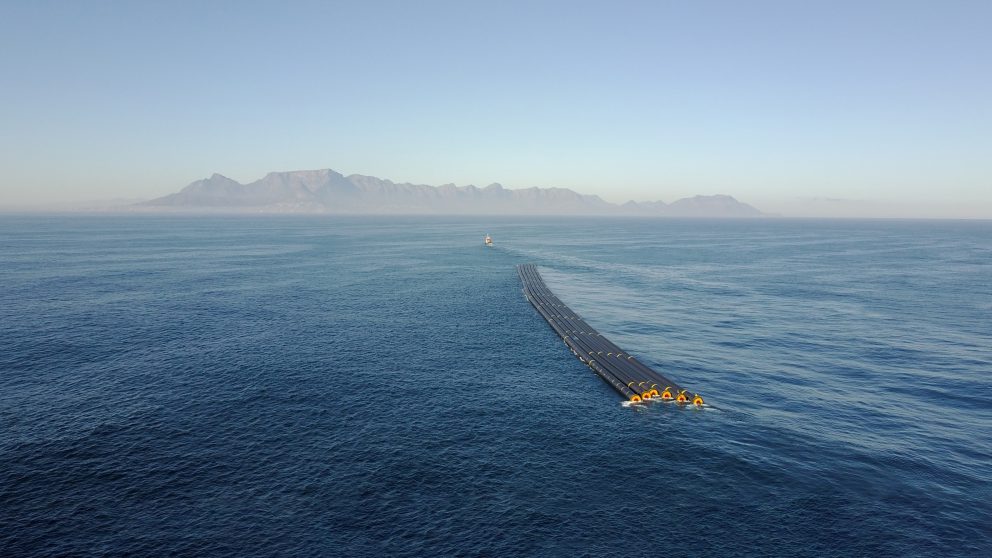


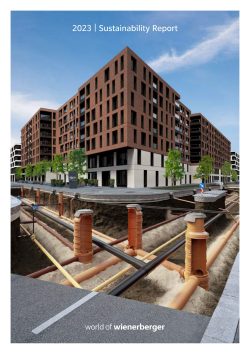
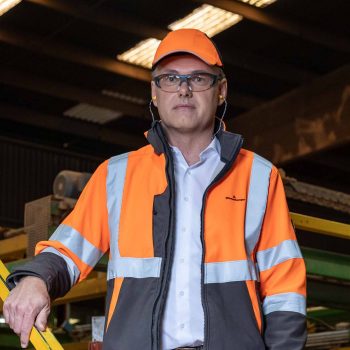
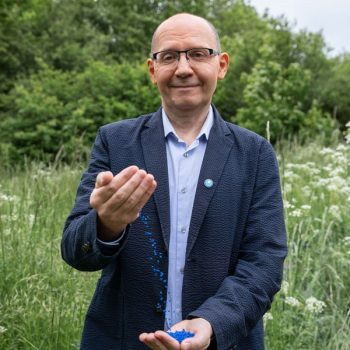
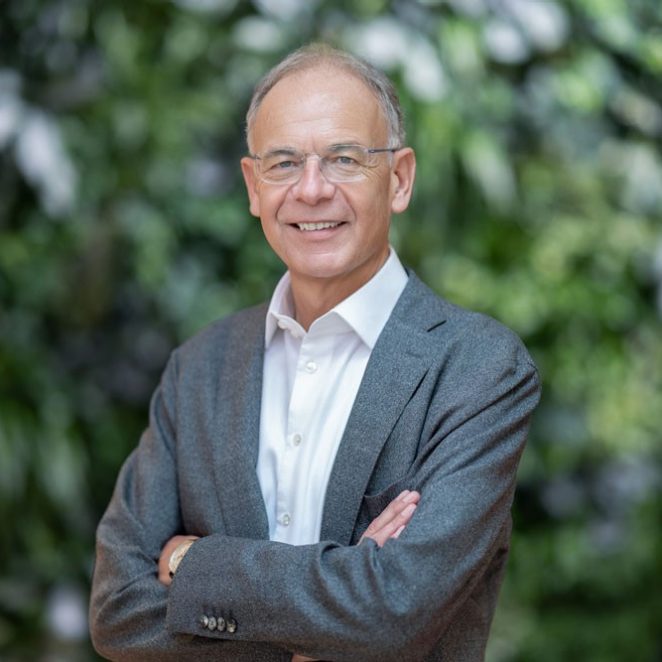
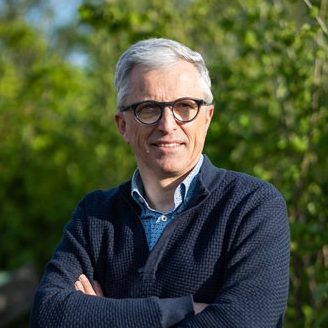
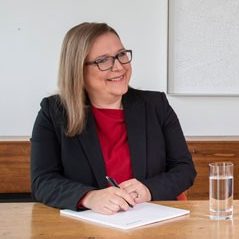

 © Adobe Stock / rawpixel.com
© Adobe Stock / rawpixel.com
